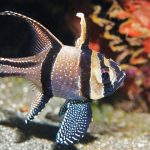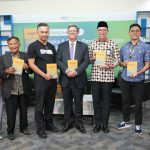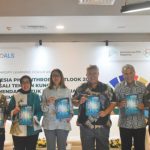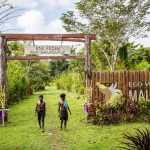Jakarta (Greeners) – One of the best things lives can offer is seeing orangutans live freely in their habitat. One of the success story of orangutan release to the wild is “Susi”.
After five years of rehabilitation, Susi was finally released to the wild on 20 May 2016 at Tarak Mountain Protected Forest by IAR Indonesia, collaborating with Ketapang Natural Resources and Conservation Agency (BKSDA) and Forestry Agency.
Susi was rescued by IAR Indonesia from illegal domestication in Pontianak. Her ruthless former owner chained her by neck for years. Consequently, she suffered infected and festered wounds, with bad odor because of the tight chain around her neck. During her medical examinations, some parts of the rubber even planted in her skin.
Sadtata Noor Adirahmanta, head of West Kalimantan BKSDA, said that it was a long process for Susi.
During the first phase for release, Susi was sick and agile in the field. She was then returned to IAR and BKSDA.
“The release process is really long because [orangutans] need to be really declared as ready to be released, then we release. Actually, BKSDA does not have strict mechanism to monitor each individuals released in the wild, such as tracking devices. We don’t have that, however we monitor general areas of West Kalimantan to assess the whole population in West Kalimantan which we have done routinely,” said Adhirahmanta via phone on Tuesday (26/03/2019). “We also got support by IAR where they specific mechanism and report to us, the government.”
READ ALSO: Sumatran Orangutan in Critical Condition with 74 Pellets Found in Her Body
Furthermore, he said that Susi’s condition was declared as suitable for release because there were no reports stating otherwise to BKSDA, and everything went smoothly. In addition, there were other orangutans managed to be released before Susi.
Susi is one of the success stories of orangutan being released in to the wild.
In a press release, IAR Indonesia stated that the success cannot be measured in short term because it will take a minimum of one year to assess a release as a success or failure.
There are lots of factors for a success release, such as the orangutan’s own capability, to survive and to adapt with new environment.
The ability to survive for orangutans comprises of the ability to climb, to find food, and to build nest. In addition, other environmental factors, such as the types and numbers of trees and population of wild orangutan in the area.
READ ALSO: Twin Orangutan Tapanuli Spotted in North Sumatra
Karmele L. Sanchez, director program of IAR Indonesia, said that IAR team is tasked to monitor orangutan development after released, record all movements, activities, to types of food consumed. The records are done every once per two minute and can run for one to two years.
Results of monitoring will be evaluated continuously by experts in their fields. These results will become the benchmark for the success of a release.
“Susi is being monitored for her development in nature since the day she was released in May 2016 up till now. Based on the behavioural evaluation, Susi is considered to be able to adapt and live in the wild,” said Sanchez adding that watching orangutans can go back to their new lives after suffering because of humans are the best thing to happen.
Susi is fortunate considering other domesticated orangutans will never be able to be released to the wild.
“When orangutans spent their times for years in rehabilitation, learning again the skills to survive as orangutans, and then able to survive in their real habitat, it reminds us on how intelligent they are. The rehabilitation process takes a lot of time, energy, efforts and money, but all of that feels worth it if we can see orangutans returned to the wild in their real habitat,” said Sanchez.
Reports by Heribertus Suciadi (IAR Indonesia), Dewi Purningsih (Greeners.co)



















































